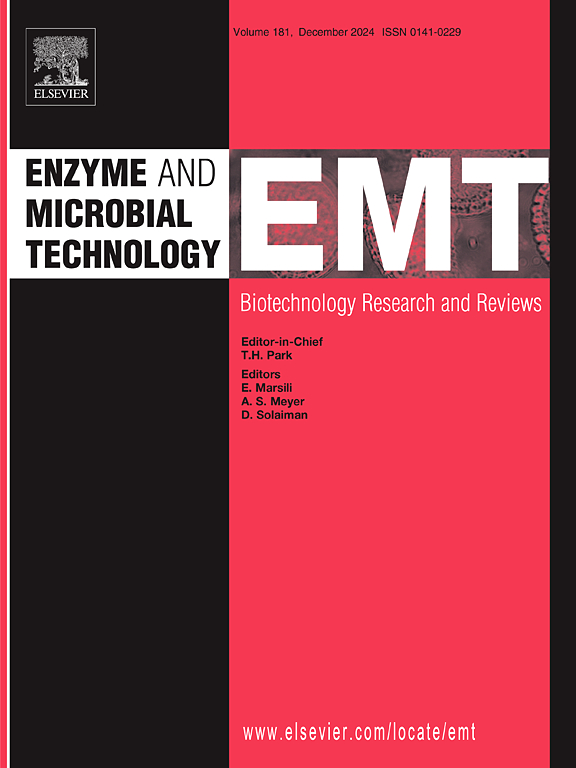Development of an enzymatic method for efficient production of DHA-enriched phospholipids through immobilized phospholipase A1 in AOT-water reverse micelles
IF 3.4
3区 生物学
Q2 BIOTECHNOLOGY & APPLIED MICROBIOLOGY
引用次数: 0
Abstract
The demand for omega-3 polyunsaturated fatty acids (PUFAs), particularly docosahexaenoic acid (DHA), has been steadily increasing due to their significant health benefits. Traditional methods for producing DHA-enriched phospholipids often suffer from low efficiency and high costs. In this study, we developed an efficient enzymatic process to prepare phospholipid-DHA, which used immobilized phospholipase A1 to catalyze transesterification in AOT-water reverse micelle systems. Initially, high concentrations of free fatty acids were produced via acid hydrolysis of algae oil followed by crystallization. Among six evaluated reverse micelle systems, one was selected for further optimization. The substrate/enzyme ratio, temperature, reaction time, and water content were optimized using single-factor experiments and response surface methodology. To enhance cost-efficiency and eco-friendly practices, substrate recycling was implemented to maximize substrate utilization. This study established a comprehensive process chain for the preparation of phospholipid-DHA, promoting its industrial production and providing a reference for the production of other phospholipid products.
求助全文
约1分钟内获得全文
求助全文
来源期刊

Enzyme and Microbial Technology
生物-生物工程与应用微生物
CiteScore
7.60
自引率
5.90%
发文量
142
审稿时长
38 days
期刊介绍:
Enzyme and Microbial Technology is an international, peer-reviewed journal publishing original research and reviews, of biotechnological significance and novelty, on basic and applied aspects of the science and technology of processes involving the use of enzymes, micro-organisms, animal cells and plant cells.
We especially encourage submissions on:
Biocatalysis and the use of Directed Evolution in Synthetic Biology and Biotechnology
Biotechnological Production of New Bioactive Molecules, Biomaterials, Biopharmaceuticals, and Biofuels
New Imaging Techniques and Biosensors, especially as applicable to Healthcare and Systems Biology
New Biotechnological Approaches in Genomics, Proteomics and Metabolomics
Metabolic Engineering, Biomolecular Engineering and Nanobiotechnology
Manuscripts which report isolation, purification, immobilization or utilization of organisms or enzymes which are already well-described in the literature are not suitable for publication in EMT, unless their primary purpose is to report significant new findings or approaches which are of broad biotechnological importance. Similarly, manuscripts which report optimization studies on well-established processes are inappropriate. EMT does not accept papers dealing with mathematical modeling unless they report significant, new experimental data.
 求助内容:
求助内容: 应助结果提醒方式:
应助结果提醒方式:


